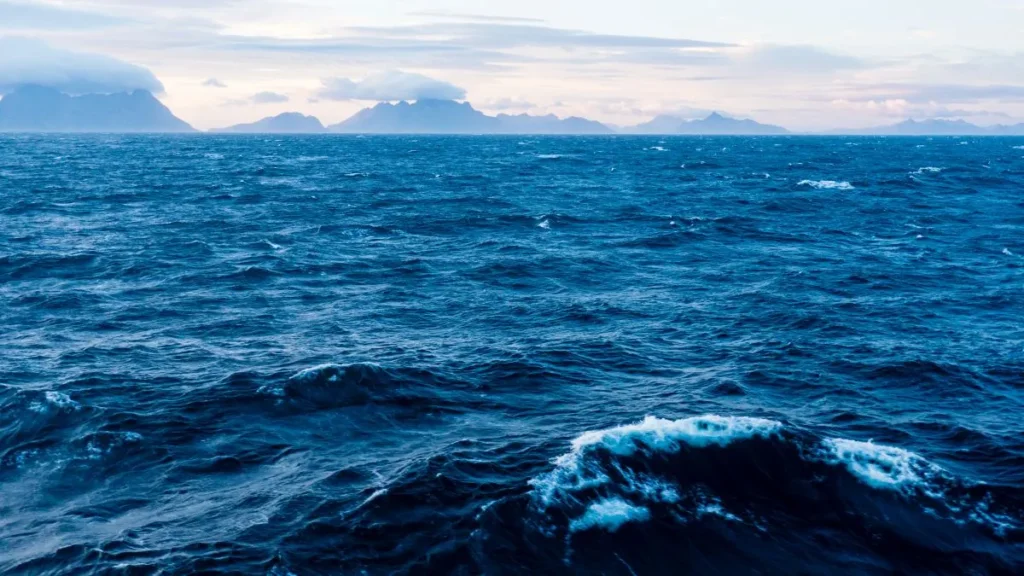The Northern Sea Route, dubbed the Polar Silk Road, is a corridor through Arctic waters that connects Europe with Asia. It passes the coasts of Russia, Scandinavia, Greenland, and Canada. Currently, it is one of the shortest sea routes between the two continents.
The corridor has been used for commercial purposes since 2010, and since then, the number of ships passing through the route has increased significantly. In 2010, 2.1 million tons of goods were transported along the route; in 2020 it was 33.1 million tons, and in 2023 it was 36.2 million tons.
The prospects for shipping along the Northern Sea Route are promising. Global warming and melting Arctic ice have made access to the region easier.
Moreover, transport time between Europe and Asia has been significantly shortened, and transport costs have also decreased. For example, on the Rotterdam to Shanghai route, the corridor is 24 percent shorter compared to the distance covered by the Suez Canal.
Compared to the Cape of Good Hope route that operators are having to use at the moment, the Northern Sea Route shortens the distance for ships by over 70%.
Comparison of distances in nautical miles between ports in Asia and Rotterdam via the Northern Sea Route and via the Suez Canal
| Load drop-off point | Cape of Good Hope | Suez Canal | Northern Sea Route | Percentage difference between Northern Sea Route and Suez Canal |
|---|---|---|---|---|
| Yokohama,
Japan |
14,448 | 11,133 | 7,010 | 27% |
| Busan,
South Korea |
14,084 | 10,744 | 7,667 | 29% |
| Shanghai, China | 13,796 | 10,577 | 8,046 | 24% |
| Hong Kong, China | 13,014 | 9,701 | 8,594 | 11% |
| Ho Chi Minh,
Vietnam |
12,258 | 8,887 | 9,428 | 6% |
Source: Świeboda J., Lysionok A., Majowicz A. and others, Intermodal transport on the New Silk Road, Polish Road Transport Institute, Wrocław 2020
In the longer term, the Northern Sea Route may serve European businesses in supplying African countries with goods through European ports.

Photo: Collin Knopp-Schwyn and Turkish Flame, CC BY 4.0, via Wikimedia Commons
Route predominantly suits China and Russia
Despite the route’s prospects and an increase in transport, the Northern Sea Route option continues to be of little interest to global operators.
At the end of July, logistics giant MSC announced that it was no longer using the Arctic route and called on other shipowners to do the same.
“Navigation in Arctic waters is extremely difficult due to ice, weather, lack of necessary chart information, and limited infrastructure. Search and rescue facilities are located far away, which means that despite development and cooperation in this area, ships and crews will be more or less on their own,” says Bud Darr, MSC Group’s Executive Vice President for Policy, Maritime, and Government Affairs.
Bud Darr also highlighted the ecological and social aspects of using the Northern Sea Route. He believes that people living in the Arctic depend on sea transport, and unnecessary transport may burden essential services in these regions.
“There is no shortcut to decarbonising shipping. Our fleet and network can efficiently transport our customers’ cargo around the world without transiting the Arctic. At MSC, we remain fully committed to avoiding trade routes in fragile marine ecosystems and sensitive environments such as the Arctic. Cutting through melting ice to open a new trade route is inconsistent with this commitment,” adds Bud Darr.
In 2022, 22 international shipping companies, accounting for 43 percent of the world’s sea fleet, committed to avoiding the Northern Sea Route.
Despite the development of modern technologies, sailing along the route is not easy. In 2021, ice suddenly covered the Arctic Ocean, leaving approximately 20 ships stranded at sea.
Due to difficult weather conditions, there is no guarantee of reaching the destination on time. The cost of cargo insurance is also rising, and due to the monopoly position of the Russian Rosatom on the icebreaking market, fees for icebreaking services are being overstated. For this reason, the Polar Silk Road is currently mainly used by Russian and Chinese companies.
Article collaboration: Hanna Skrypal









